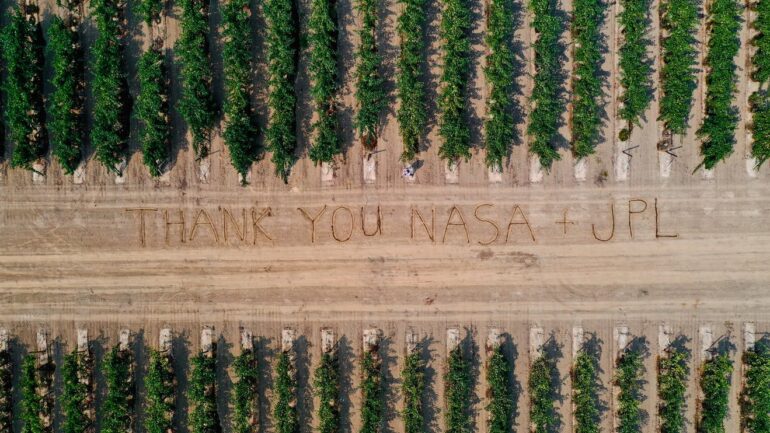TL;DR:
- NASA employs advanced technology to spot grapevine disease in California’s vineyards before visible symptoms appear.
- A costly infection in cabernet sauvignon grapevines can now be accurately detected through remote sensing.
- GLRaV-3, a viral disease, inflicts significant damage on the U.S. wine and grape industry annually.
- The innovative airborne science instrument, AVIRIS-NG, enables early detection and potential intervention up to a year in advance.
- The research showcases the potential for combining space technology, machine learning, and ground-based monitoring in agricultural decision-making.
Main AI News:
In a remarkable case study, scientists at NASA have achieved a groundbreaking feat by detecting a costly infection in cabernet sauvignon grapevines well before visible symptoms appear to the human eye. The devastation caused by withering molds, root-rotting bacteria, viruses, and other plant pathogens results in a significant 15 to 30% loss of global harvests annually. However, early detection can be the key to salvaging a crop that would otherwise be doomed. Now, thanks to an innovative airborne science instrument developed at NASA’s Jet Propulsion Laboratory in Southern California, researchers have found a powerful way to identify stealthy signs of grapevine disease, which annually inflicts billions of dollars in damages on crops.
The remote sensing technique, which leverages the remarkable capabilities of NASA’s next-generation Airborne Visible/InfraRed Imaging Spectrometer (AVIRIS-NG), opens up new possibilities for ground-based monitoring of grapevine diseases and other crops. With a focus on a viral disease known as GLRaV-3 (grapevine leafroll-associated virus complex 3), researchers from JPL and Cornell University embarked on a mission to assist growers in identifying infections early on, even from the air. GLRaV-3, primarily spread by insects, leads to reduced yields and spoils developing fruit, resulting in a staggering $3 billion loss to the U.S. wine and grape industry annually. Traditionally, its detection required labor-intensive vine-by-vine scouting and expensive molecular testing.
Dr. Katie Gold, an esteemed plant pathologist and assistant professor at Cornell University, spearheaded the research effort. Recognizing that sick plants may not exhibit outward symptoms immediately, Dr. Gold emphasized the criticality of early detection, which poses a significant challenge for growers. The telltale signs of infection, such as discolored foliage and stunted fruit, may take up to a year to manifest in grapevines affected by the leafroll virus. However, on a cellular level, stress initiates changes in how sunlight interacts with plant tissue long before visible symptoms emerge.
The AVIRIS-NG, housed in a research plane, scanned approximately 11,000 acres of vineyards in Lodi, California, a region renowned for being a major producer of premium wine grapes in the heart of California’s Central Valley. The data collected from this aerial survey was then fed into computer models specially developed and trained to distinguish infected vines from non-infected ones. To ensure the accuracy of their findings, the research team collaborated with industry experts who scouted more than 300 acres of vineyards from the ground, searching for visible viral symptoms while collecting vine samples for molecular testing. This comprehensive effort, while demanding and carried out during a California heatwave, resulted in a resounding success, achieving an impressive 87% accuracy in the early detection of GLRaV-3.
The impact of this research extends beyond the grapevine industry. The researchers underscored how emerging capabilities in air and space technology could support pathogen surveillance efforts, with forthcoming missions like NASA’s Surface Biology and Geology (SBG) playing a crucial role. SBG, part of NASA’s Earth System Observatory, will provide invaluable data that, when combined with machine learning, can revolutionize agricultural decision-making on a global scale.
Fernando Romero Galvan, lead author of the studies and a doctoral candidate, emphasized the increasing importance of sustainable farming practices in the face of climate change. He believes these are exciting times for remote sensing and plant disease detection, as scalable solutions can empower growers to make data-driven and sustainable crop management decisions. The vision of the researchers extends far beyond a single disease in one California region; they aspire to apply their methodologies to combat various crop diseases worldwide, benefiting growers across the globe.
Conclusion:
NASA’s breakthrough in detecting grapevine disease using AVIRIS-NG represents a significant step forward for the agricultural market. The early identification of infections allows growers to intervene timely, minimizing losses and preserving crops. This integration of advanced technology and data-driven approaches has the potential to revolutionize agricultural practices, providing a foundation for sustainable crop management and safeguarding the industry against climate-induced challenges. As remote sensing and machine learning capabilities continue to evolve, the future holds promising opportunities for global agricultural surveillance and informed decision-making for growers worldwide. Businesses in the agricultural sector should closely monitor these developments and consider adopting similar technologies to gain a competitive edge in a market that demands resilience and efficiency.

